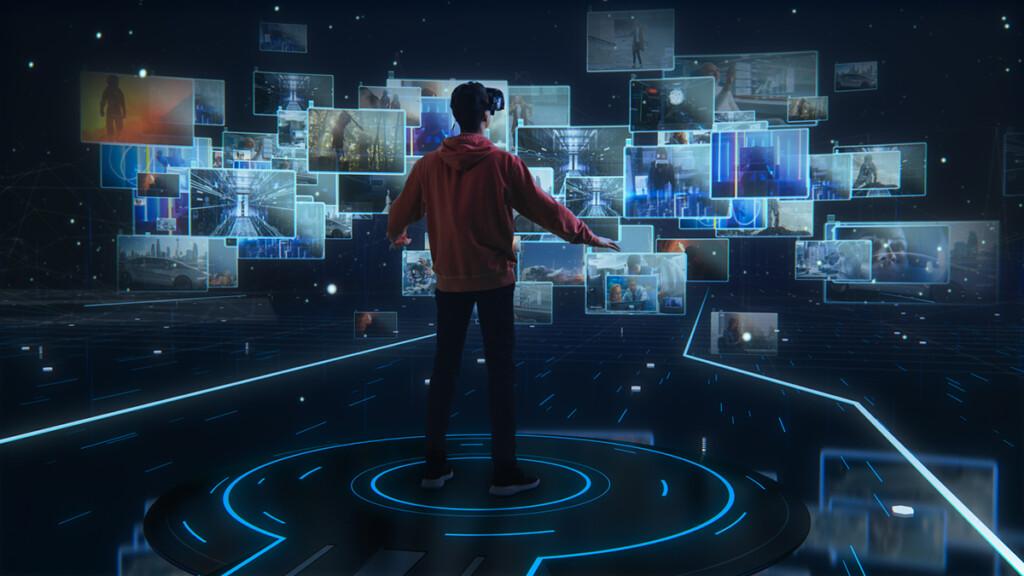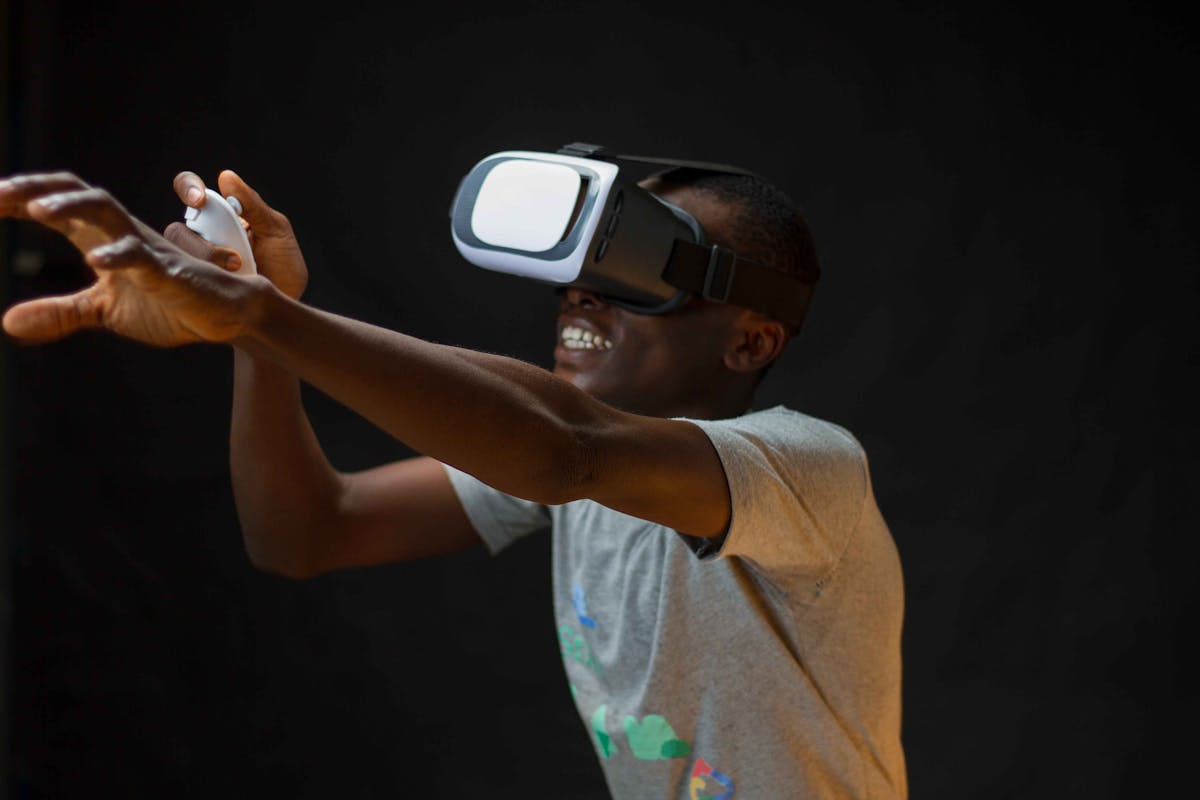Screens have been an essential part of our lives ever since the first smartphone hit the market. It revolutionized the way we communicate, work, travel, shop, and much more. Today we are surrounded by screens. According to a research by Pew Research Center, a third of Americans are living in a household with 3 or more smartphones. It has become impossible to escape screens, as they have become vital for our everyday lives.
Now, users are looking for more and more immersive experiences through their screens. And users got to experience augmented reality technology through the widely popular app Pokemon Go. It transcended the boundaries of what was possible through the screens. It was the very first use of AR technology in an app for a smartphone. No one had thought of it before this. The huge popularity of this APP validated the mass adoption of augmented reality. Similarly, VR headsets have been the most accessible VR technology for users for a few years now. The most recent widely acceptable and adopted development in the world of AR and VR has been Apple’s Vision Pro. It is a headset that blends both AR and VR technologies so that its users have a more immersive experience. According to Statista, the number of AR and VR users is expected to reach 3,278 M users by 2029. This proves the increasing demand for these technologies.
What will these technologies look like in the future? This is the question we all should be asking. Why? You ask. It is because there is no doubt that these technologies will take over just like AI did. And these technologies will only become more accessible in the future. So, we must be prepared to adopt and take advantage of these technologies as early as possible. But first, before looking into what the future holds for AR and VR technologies, we must understand them.
Understanding AR and VR
As mentioned earlier, screens have become a regular part of our lives. We get a lot of our information through screens, be it computers, tablets, or mobile phones. Not only that, screens are also our way out of our tiring routines as they also provide entertainment like movies and games etc. Augmented and Virtual reality are two key technologies that’ll shape how we use our screens.
Virtual Reality
Growing up, or even now, have you ever just closed your eyes and immersed yourself in the world of your thoughts? A world that only exists in your imagination. That is how virtual reality technology works. It is a computer generated simulation of an alternate reality or world. It is mostly used in video games and 3D movies. Using the VR headset you become a part of that world.
VR has been a huge success in the gaming and entertainment industry, allowing users to immerse themselves in a simulated environment.
Augmented Reality
Augmented reality is a bit different from virtual reality. AR mixes the real world with digital images layered on top of it. If you have seen the Apple Vision Pro in action, that is the best example of the use of AR technology. With AR, you can place screens anywhere you want in your room and then access them whenever you want. This also allows you to be more productive and facilitates work from anywhere you want. AR and VR work in different ways, one replaces your vision, and the other adds to it.
If you are looking to build a mobile app integrating AR and VR technologies, then it is better to consult with a company that offers on demand mobile app development services. Let’s now look at the technological landscape of AR and VR to better understand how these technologies work.
Technologies Used In AR and VR
There are differences in how both AR and VR technologies are implemented, however, both are composed of the following key technologies.
1- Optics
It is the most important part of any AR/VR device. Optics allow immersive and interactive environments by addressing challenges such as field of view, resolution, and eye comfort. Holographic optical elements (HOEs) are the next step in AR/VR technologies to achieve complex optical functions.
2- Chips
The chip market for AR/VR devices is more complex than the optics. These technologies require various types of chips such as processor ICs, user interface ICs, and power management ICs. The trend nowadays is focusing on integrating AI with AR/VR technologies to create more immersive and interactive user experiences, this raises the requirements of chips used in AR/VR devices. For this purpose both Apple’s AR devices and Microsoft’s HoloLens use their self customized chips.
The Snapdragon AR1 and XR2 developed by Qualcomm are chips specially designed for AR/VR devices.
3- Software
Chips and Optics are both hardware used in AR/VR devices that boost user experience. However, a booming software development industry is also important. Microsoft’s HoloLens in this regard is the most complete software.
Top AR/VR Apps
To better understand the future of the AR/VR industry can be hard to understand without knowing the top Apps contributing to the industry.
- Google Lens(AR App) : It is an augmented reality app that brings relevant search results. This is supported by both iOS and Android operating systems.
- Netflix (VR App) : Netflix is now compatible with Google’s Daydream VR viewing device. Users can watch movies, shows, and other Netflix content through a regular subscription and enjoy all the VR benefits through Google’s Daydream VR.
- IKEA Place (AR App) : IKEAS’s Place is the best use of AR technology in an app. It helps virtually paint any object in a real world setting. This app supports iOS, Android and ARCore compatible devices.
- YouTube (VR App) : YouTube also has adopted VR technology to make the user experience more immersive for its users. You can now view 360 video and VR content on YouTube using specific headsets and devices like the Oculus Quest series.
- Jaunt VR : It is a free VR application that allows users to enjoy videos, movies and concerts. This app supports iOS and Android devices.
The Future of AR and VR technologies
The current AR/VR technologies rely on smart phones to display content. However, these devices lack the visual quality to provide a completely immersive experience to the user. Moreover, VR headsets tend to be heavy, making prolonged usage hard for users.
What is the future of our devices and AR/VR technologies? What if we could see through the screens we are surrounded by every day? What if instead of going to the supermarket, we could just put on our headsets to explore and shop in the market? These are all possibilities that can be achieved through these technologies. But the growth of AR/VR is dependent on technological advancements, which seem distant now.
These 5 trends are most likely to shape the future of the AR/VR world and how people connect and companies operate using these technologies.

“Future of immersive experiences: How AR and VR will shape our digital interactions.”
1- AI in AR and VR Spaces
AI has already proved its worth, while we have only had a taste of what the AR and VR technologies hold for us. But, in the future most development companies will look to combine AI with AR/VR technologies as AI has already been proven to enhance user experience. Furthermore, advanced AI approaches like machine learning may assist computers and other devices comprehend and effectively use data. This may even lead to the emergence of interactive workspaces.
2- Machine Learning Integrations
Machine learning integrations can help enhance performance and user experience. We may see AI-driven content creation in the future AR/VR devices. Intelligent object recognition such as in Google lens, personalized recommendations, and adaptive user interfaces can all act together to make the AR?VR experience tailored for an individual. They do that with the help of machine learning using data obtained from the user’s behavior and preferences.
3- Immersive Social Experience
It ain’t long till we will be able to interact with each other in a 3D space using AR/VR technologies. It’ll facilitate users to engage in an immersive social experience in a virtual space, neglecting the restraints of a physical location.
4- 5G Integration
The 5G network will most likely enhance the capabilities of the AR and Vr technologies. Users will have high-definition and more responsive experiences. It includes real time multiplayer gaming, complex AR applications, and seamless streaming of 360 degree videos.
5- Healthcare and Wellness
We’ll see the AR and VR technologies to be leveraged in the Healthcare and Wellness industries. These technologies have the capability to facilitate surgical training and physical rehabilitation through virtual medical simulations.
Conclusion
AR and VR technologies are bound to become a norm in the future. However, their growth is dependent on technological advancements. That is the only thing that can impact their rapid growth. We have already seen what the AR and VR technologies are capable of through the very first mobile app to use AR technology, Pokemon Go. But that is just the tip of the iceberg in the immersive world of AR and VR.
The possibilities are limitless, but for that to happen product companies have to take a proactive approach. Unfortunately, that is not the case, as these companies seem sleepish in developing their plans. This is due to the fact that 51% of companies haven’t even developed an initial plan.




